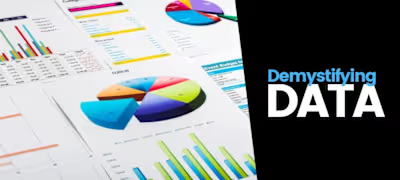4 Ways a Sales Enablement Strategy Helps Sales Teams Thrive

sales enablement strategy
Friction among revenue teams, especially surrounding their sales content and collateral, is an all-too-common phenomenon.
The tensions usually play out like this:
Marketers worry that their content, however expertly crafted or meticulously researched, will go unused.
Conversely, salespeople feel at sea in an ocean of material and end up creating their own sales collateral, saving it in places where its performance can neither be analyzed nor optimized.
But there’s good news on the horizon.
If your teams are experiencing some variation of this age-old “marketing vs. sales” theme, a formalized sales enablement strategy and plan can offer a lasting solution with real and tangible results.
Now for the less-good news.
With an estimated 28% of companies operating under a formal agreement between sales and marketing, having a sales enablement strategy remains an untapped resource for many organizations.
It’s likely your business isn’t quite living up to its full sales enablement potential, despite the fact that –– when implemented appropriately –– such a strategy can make both sales and marketing lives easier (beyond simply “enabling” sales activity).
Hoping to expand your sales enablement practices and sidestep any interdepartmental conflict? Below are four key aspects of a codified sales enablement strategy, with an emphasis on its advantages for creating, optimizing, and distributing content.
1. Enhanced Internal Communications
One critical component of sales enablement is an open, honest, and aligned relationship between marketing and sales.
Essentially: No alignment, no sales enablement.
A truly efficient strategy requires marketers to stay in step with sales engagement activity: that is, when, if, and how sales teams use content assets, and to what extent.
This kind of surveillance enables marketing teams to:
Gather intel on content performance from a sales perspective and edit assets appropriately
Keep on top of last-minute in-field changes and better customize content recommendations according to sales reps’ preferences
Review content in terms of comprehensive analytics (such as approximate influenced revenue per asset). Detailed reporting can provide actionable information regarding sales activity –– fortifying sales enablement systems and paving the way for more streamlined surfacing
Alignment techniques also inspire greater transparency between marketing and sales teams. This fosters a give-and-take atmosphere in which members can share their thoughts and synchronize practices regarding crucial business elements like individual asset performance; in-progress or upcoming campaigns; and even overarching concepts such as brand narrative and tone.
Plus, an alignment culture can lead to higher levels of content usage, which increases audience engagement (as well as your chances of closing a deal). A recent example is Terminus B2B software, which has enjoyed a demonstrable uptick in usage since onboarding a systemic strategy.
Speaking on the positive business impacts of Terminus’s sales enablement efforts, sales enablement manager, Amanda Dossey, noted: “We’ve seen user adoption rank go up. People are really using this content. [And p]itching has been very successful with our customers.”
2. Consolidated Assets and Data for Easy Access and Optimization
Alignment is a great start, but how can sales teams leverage content if they don’t know how to find it (or even where to look)?
Enter sales enablement-powered centralization.
Any robust strategy can and should include a centralized repository for:
All content assets
Buyer and sales team engagement data
Any relevant metrics for performance efficacy
So long, disorganized silos.
A well-rounded sales enablement platform will allow marketers to upload, edit, and store all their sales content in one concentrated hub, documenting each asset from creation through to the final revision.
This means salespeople will be able to locate all content assets swiftly and easily using a wide variety of SE search criteria, which can include product, service, campaign, or even syntactical and thematic markers.
But remember: Access to hard data is just as important as access to useful content.
Thankfully, sales enablement-powered consolidation comes to the rescue here as well.
Integrated repositories also enable sales and marketing teams to house critical data findings (and subsequent analysis) in one specified location. This, in turn, empowers marketers and salespeople to home in on the highest-performing content assets, which:
1. Lets marketers revamp subpar assets to better address buyer engagement
trends and
2. Prepares sales teams to target prospects with laser-like precision
Digital services firm Lenati (now PK Global) reports the company’s consolidation helps salespeople feel more secure in their content selection while simultaneously giving marketers increased confidence in their ability to surface and optimize the best possible assets.
Which leads us to…
3. Fine-tuned Targeting
As Weidert Group wrote about previously, it’s crucial for sales content stockpiles to remain relevant in a variety of contexts. After all, today’s deals depend on data-driven assets that reflect the needs and behaviors of desired targets at each and every buyer stage.
And yet, in recent years, a full 71% of sales leaders report a disconnect between sales team activities and the needs of business clients.
Sales enablement can help bridge the gap.
Engagement data –– i.e, the kind stored in your centralized sales enablement depot –– is key in developing personalization strategies to refine your buyer messaging. These help teams speak to specific buyers.
Synthesizing your sources of consumer information facilitates a more in-depth understanding of buyer audiences, rooted not just in demographics, but also in engagement behavior. This type of holistic knowledge can inform new content inspired by legitimate buyer trends: the opposite of a proverbial “stab in the dark.”
Consider this hypothetical:
Through sales enablement analytics, your sales team notes a certain buyer shows high levels of video engagement, spending a fair amount of time watching videos the sales team has pitched rather than reading through the accompanying written material. This indicates the buyer’s primary intake of information comes in a visual format.
Armed with this info, your marketing team launches an educational video series with complementary infographics to meet this buyer (and those like him) where he tends to “live,” thereby increasing your chances of enticing them to purchase.
Speak to specific stages in the buyer’s journey.
Combined intel regarding buyer and sales engagement can also provide marketing teams with the benefit of content reporting, which can be extremely useful in highlighting which pieces of content have proven effective in the past…and at what times.
Such reporting gives marketers unprecedented visibility into which content works best at which juncture, meaning marketing teams can help sales colleagues match assets to the appropriate audience at exactly the right time and/or make a wealth of contextual assets available to salespeople via the company portal.
4. Transformation of a Traditional Funnel into a Closed-loop Flywheel
Beyond all of the above, sales enablement can take both enhanced alignment and informed content creation one step further by supporting closed-loop operations between sales and marketing –– reinventing the sales process and allowing teams to remain flexible and adaptive, even in times of crisis.
Sales enablement closed-loop practices can transform the traditional linear sales funnel into a 360-degree flywheel, keeping teams up to date on consumer behaviors and asset performance while providing ongoing feedback, so marketing and sales teams can stay ahead of industry curves.
Once you’ve implemented your sales enablement solution and established a centralized headquarters for your content, analytical data, and customer demographics:
Sales teams can effortlessly share info discovered at the bottom of the sales funnel to help amend content creation at the top
Marketers can achieve panoramic insights into content performance, availability, and freshness, allowing them to adapt, revise, or revitalize content in near real time –– so salespeople are never left unprepared
Both techniques are vital for staying agile in uncertain times. In fact, George Donovan, CRO of Allego, cites closed-loop feedback as a constructive strategy for helping marketers cull or recalibrate outdated content in the wake of COVID-19 –– which no doubt will remain the case as businesses move into the post-pandemic era.
When it comes to creating and disseminating content, sales enablement possesses the power to unify, augment, and refine your processes, ultimately shaping your marketing and sales activity into a sleeker, more well-oiled machine. As such, sales enablement not only helps teams elevate their content creation, it also strengthens sales effectiveness, increases overall productivity, and improves a company’s peace of mind.
And, as if this weren’t enough, sales enablement also lays the groundwork for smoother, more collegial relationships among marketing and sales teams. In other words: It puts an end to the tired “marketing vs. sales” rivalry once and for all.
Isn’t it time you leverage the tips shared here to serve as a springboard for developing a new standardized sales enablement plan to support and enrich your business? Get started by accessing this helpful planning guide for establishing a service level agreement between your teams below, Marketing and Sales SLAs: A Guided Tour.
Like this project
Posted Apr 17, 2024
See how a sales enablement strategy can transform the way your sales and marketing teams collaborate, and how to optimize content between teams.
Likes
0
Views
8





